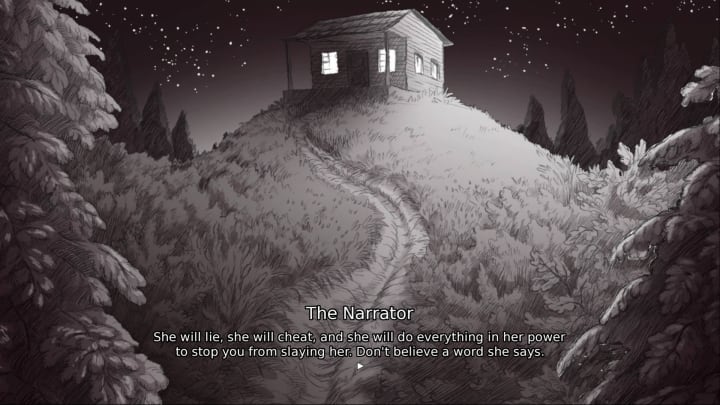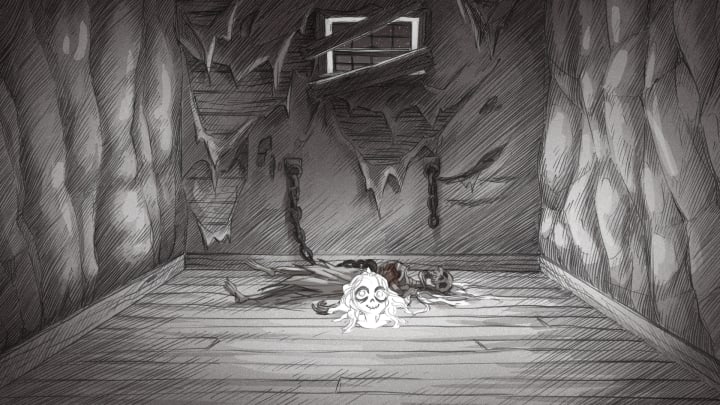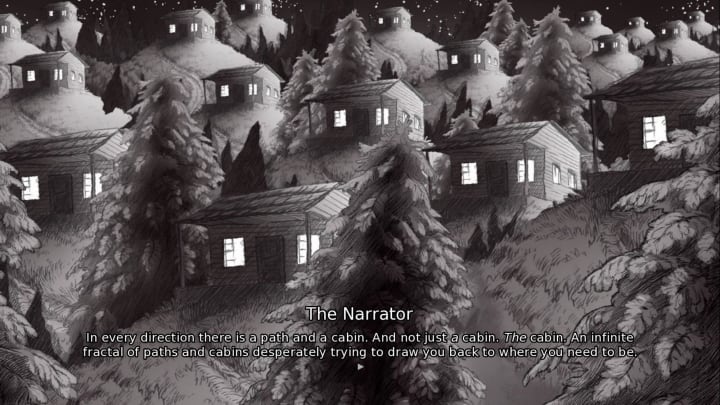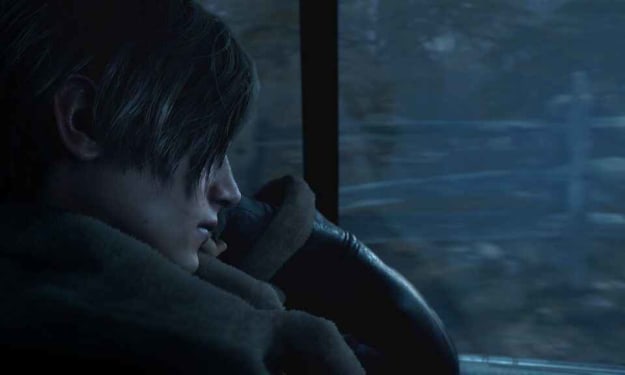Content warning
This story may contain sensitive material or discuss topics that some readers may find distressing. Reader discretion is advised. The views and opinions expressed in this story are those of the author and do not necessarily reflect the official policy or position of Vocal.
The Narrative Labyrinth of Slay the Princess
Let's analyse how Black Tabby Games crafted this masterful meta-narrative

Once upon a time, in a cabin in the woods, a Princess needs to be slain before she ends the world. Or does she? In Slay the Princess, gaming's new indie horror darling, nothing is as it seems. Developed by Black Tabby Games, this visual novel takes everything you thought you knew about fairy tales and multiverses and flips them on their heads.
The Narrator(s)
Slay the Princess opens on a black-and-white illustration of a path in the woods. The Narrator describes the scene to you and your mission: slay the princess. You are the Voice of the Hero, and it's you who has been tasked with the slaying.
Immediately you are presented with a long list of choices, including: questioning The Narrator, turning around and wiping your hands of the whole sorry business, or agreeing to proceed to the cabin. While giving off exposition, The Narrator's dialogue is ambiguous enough to hook us, hinting at a deeper mystery lurking beneath the surface narrative.
Even when doing as The Narrator tells you, the Voice of the Hero is often unsure if this is the right source of action. She is, after all, just a Princess. The dual narration creates layers of storytelling. It constantly keeps players off-balance and represents the game's themes of uncertainty and shifting realities.

Oh no, the consequences of my own actions!
Before we even met the Princess, we're offered a staggering range of player choice. Each decision splits the narrative into new and unexpected directions. These choices range from moment-to-moment decisions that subtly alter character interactions to major plot points that create new branching stories.
Your choices rewrite the very nature of the game world. A single decision could transform the Princess from a maiden into a monster. It could change the genre of the game from fantasy to horror or even romance. There is immense replay value in this; it would take multiple playthroughs to see every single outcome and every line of dialogue.
No mere fairy story
Slay the Princess explores the complex, often contradictory nature of human relationships by stripping away everything we find comfortable and familiar. At its heart, this is still a love story between a Hero and a Princess. However, it suggests that true love is complex, and often fraught with conflict, doubt, and, most important of all, change.
We are forced to confront our role in perpetuating stereotypes and tropes, our suspicions and fears, and our fetishes and biases. It then gives us the tools to reimagine the story in new, thought-provoking ways.

I can be your damsel, or your devil
The Princess defies simple categorisation, shape-shifting between archetypes with unsettling fluidity depending on how you interact with her. In one world, she might embody a caged animal, hunting the Hero from the shadows in a desperate attempt for freedom. In another, she becomes a Goddess, an unkillable cosmic deity, all because you put her on a pedestal in a previous life. Another path might see her as a wraith, cold and disillusioned after you killed her and left her body to rot in the cellar.
An art style to (literally) die for
At first glance, Slay the Princess's art style feels like an illustrated book of fairy tales. The Princess' wide, almost anime girl eyes remind me of learning how to draw as a kid. There is a naivety, an innocence in the bold, sketchy lines that's nostalgic.
As the story evolves based on our decisions, the art transforms in subtle yet compelling ways. The familiar path in the woods might distort into a jungle or shattered mirror with a simple decision. The Princess transforms as she moulds herself to your perception of her. These shifts are often subtle—a change in posture, a flicker in her eyes—but sometimes they are drastic, including shadowy beasts with glowing eyes to grey, bloated corpses.
Colour is also used as a powerful narrative tool. Slay the Princess has a monochromatic palette; however, this is occasionally interrupted by vivid red, signifying that the narrative is rapidly diving into the horror genre. Negative space also enhances the game's visual storytelling: large areas of darkness or white space make us wonder what is lurking in those spaces.

Am I a bad person for killing a videogame character?
We are immediately faced with an ethical quandary just by reading the title. If we approach the Princess on the assumption that she is just a Princess, she plays her role as the innocent maiden. If you choose violence, however, the Princess will respond in kind, defending herself and even, when pushed, torturing the Hero for fun. Hurt people hurt other people, as the saying goes.
Slay the Princess asks the player if violence is justified for the greater good. As the narrative progresses, the player is forced to decide what to do with the Princess (even if that decision is to do nothing), and then immediately confronts us with the consequences of our choice. The game gets us to question the nature of good and evil, blurring the lines between hero and villain until the words lose their meaning.

The end, or maybe just the beginning?
As we emerge from the cabin, with or without the Princess, we find ourselves changed. Slay the Princess reminds us that, not only in the game but in real life, the stories we tell ourselves have the power to shape our reality. This game is a testament to the power of an interactive medium like videogames and encourages us to look beyond the perceived limitations of our own story.
About the Creator
Charlie-Anne Butterworth
Gothic author & narrative designer from East London. Probably re-watching Buffy the Vampire Slayer 🗡️
Enjoyed the story? Support the Creator.
Subscribe for free to receive all their stories in your feed. You could also pledge your support or give them a one-off tip, letting them know you appreciate their work.






Comments
There are no comments for this story
Be the first to respond and start the conversation.